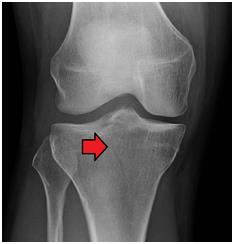Get 10% Off*, Use Code: HPDS25
Get 10% Off*, Use Code: HPDS25

The knee is one of the most important, strong yet vulnerable joints of the body. Most of the injuries are commonly centered to the knee. Hence there is a huge spectrum of treatments and medications for knee injuries. Many a time the injury spreads and affects the leg as a whole.
There are a number of knee injuries that can affect day-to-day activities of a person. These include:
The patella is the most vulnerable bone in the knee. The ends of the femur and tibia where they meet to form the knee joint can also be vulnerable to fractures. High energy trauma, such as falls from significant heights, and motor vehicle collisions are some of the major reasons for knee fractures.


When the bones of the knee are forced out of place, either completely or partially, the condition is called a dislocated knee. For example, the femur and tibia can be forced out of alignment and the patella can also slip out of place. Abnormality in the structure of a person's knee is the major cause of dislocation. In people who have normal knee structure, dislocations are most often caused by high energy trauma such as falls, motor vehicle crashes and sports-related contact.
ACL, or Anterior Cruciate Ligament, is a set of ligaments in the front portion of the knee. Athletes who participate in high energy sports like soccer, football and basketball are more prone to injure their anterior cruciate ligaments. Rapid change of direction or incorrect landing from a jump can tear the ACL. About half of all injuries to the anterior cruciate ligament occur along with damage to other structures in the knee, such as articular cartilage, meniscus or other ligaments.


PCL, or Posterior Cruciate Ligaments, are a set of ligaments located in the posterior part of the knee. It is often injured from a hit to the front of the knee while the knee is bent. It usually occurs in motor vehicle crashes and sports-related contact. Posterior cruciate ligament tears tend to be partial tears with the potential to heal on their own.
When a major force pushes the knee sideways the first to get injured are the collateral ligaments. These are often contact injuries. There are two types of collateral ligaments viz. median and lateral ligaments. The MCL, or medial collateral ligaments, injury is usually caused by a direct blow to the outside of the knee, and are often sports-related. Blows to the inside of the knee push the knee outwards and injure the lateral collateral ligament.


Sudden meniscal tears often happen during sports. In many cases, twisting, cutting, pivoting or being tackled leads to a meniscal tear. Meniscal tears may also occur as a result of arthritis or aging.
The quadriceps and patellar tendons are the major set of tendons in the knee. A stressful stretch can lead to a tear. Although anyone can injure these tendons, tears are more common among middle-aged people who play running or jumping sports. Falls, direct force to the front of the knee and landing awkwardly from a jump are common causes of knee tendon injuries.

Disclaimer: All content found on our website, including images, videos, infographics and text were created solely for informational purposes. Our content should never be used for the purpose of diagnosis or treatment of any medical conditions. Content shared on our websites is not meant to be used as a substitute for advice from a certified medical professional. Reliance on the information provided on our website as a basis for patient treatment is solely at your own risk. We urge all our customers to always consult a physician or a certified medical professional before trying or using a new medical product.

Taikhum Sadiq has been a Health Products For You contributor since 2016.
He is an archaeology student and is passionate about learning about the past and how it impacts our future. He believes ...
How To Increase Iron Levels Quickly
It’s a question that must have puzzled you like many others. Iron is essential in hemoglobin production and its inadequate levels can negatively impact your health. Dive into this informative article to explore top iron-rich foods that can help you fight iron deficiency.
10 Best Coccyx Cushions for Tailbone Pain
If you're like most people, you spend about 8 to 10 hours sitting every day. However unhealthy, it is part of life for many, and can cause tailbone pain. Coccyx cushions can help alleviate this pain. Click to read more and find the perfect coccyx cushion for your tailbone pain.
5+ Best Adult Diapers for Fecal Incontinence
Dealing with fecal incontinence can be challenging, but you're not alone. Read this article and navigate through discreet and effective solutions that help you manage fecal incontinence and let you live life on your terms with confidence and comfort.
Top 5 Best Reviewed Nebulizers of 2024
Need an effective and affordable nebulizer? Look no further, in this article we offer 5 of our best reviewed nebulizers that are loved by our customers. Click to read more and find the perfect nebulizer for all your respiratory needs.
10 Best Penis Pumps For Erectile Dysfunction
For anyone dealing with erectile dysfunction, penis pumps serve as a great way to manage it. But with so many products available, determining the best one for your needs can be challenging. To assist you in refining your choices and making an informed decision, here are our top 10 options, recognized for their effectiveness and safety.